- 12/3/18
- 37,502
- 80,060
- 113
So you want to buy a rep Rolex GMT Master and you are confused by all the different models and the hand stacks and the movements and the endless conflicting information. Well, this will hopefully clear up some of the confusion and help you make more informed choices on your purchases.
I will focus mainly on the rep differences in this post, but if you want to learn more about the history and the evolution of the models, see this link. You can read up here about different variations in each model like insert options, dial indices, SELs, lug holes, etc. That is not the focus of this post.
http://www.gmtmasterhistory.com/
MODELS
First let’s talk about models. I’m restricting these listings to the most common reps, there are additional variations in the 5 and 6 digit series. Here are some examples of the most common models.
4 digit - 6542


4 digit - 1675
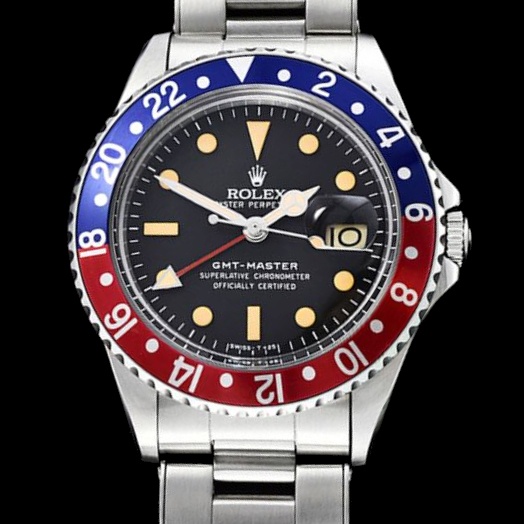

5 digit - 16710

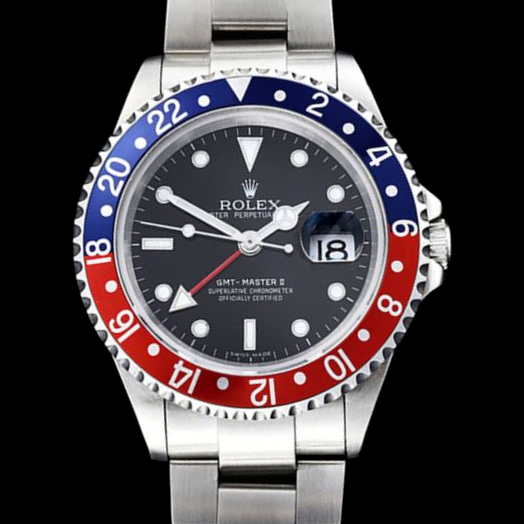
6-digit - 116710 LN (Black), BLNR (Batman), 116713 LN (Two-tone)
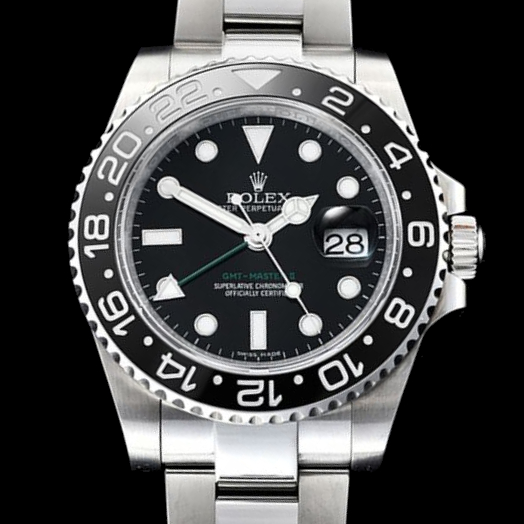

6 digit - 126710 BLNR (Batman), BLRO (Pepsi), 126711/5 CHNR (Root beer)

HAND STACK
CHS = Correct Hand Stack
ICHS = InCorrect Hand Stack
The 4-digit gen models have the GMT hand on the bottom of the hand stack. 5 and 6 digit gen models have the hour hand on the bottom. Rep movements can have the hand stack correctly configured, or incorrectly configured depending on what movement is used with which model. Note that a certain movement can be correct for one model and incorrect for another model with regard to hand stack. The hand stack is only as important as you make it. The GMT and hour hands are only near each other for about two hours a day, otherwise it’s not that noticeable to many.
Here are pics of a 1675 and a 16710. If you zoom in you can see that both have the GMT hand on the bottom. From the discussion above, we know that this is CHS for the 1675 and ICHS for the 16710.


Here is a pic of an hour hand on the bottom of the stack. This is CHS for 5 and 6 digit models.

Note that BP/GMF uses a GMT hand hole surround that is larger than the hour hand hole surround beneath it. Don’t let that stop you from ID’ing both these watches as CHS (hour hand on the bottom).

MOVEMENTS
This is the main focus of this post, to help members differentiate among the various movements available for rep Rolex GMTs. Many TD sites list the movements incorrectly and it is ultimately up to you to know what you are buying. You need to become skilled in identifying two aspects of the watch pics you see on a TD website - the hand stack and the movement. If you correctly ID both of these, you will know for sure what you are buying despite what the site information may say. It is very easy to do this, I will show you how. We previously saw how to ID whether the hand stack is CHS or ICHS, next we will see how to ID the movements.
Movements can be broken into three main groups - DGs, ETAs, and Superclones.
DG MOVEMENTS
DG movements for GMTs will be either a 2813 or a 3804, depending on whether or not the GMT or hour hand is independent. Many cheaper DG GMTs will not have an independent GMT hand, it is slaved to the hour hand, but on a 24 hour rotation cycle. On these models, the bezels must be used to observe a second time zone. Note that the gen 4 digit GMTs and two early 5 digit gen models (16750 and 16700) did not have an independent GMT or hour hand.
Look at the TD movement pics to ID the DG movements. They are easy to ID. Almost always has blue screws, big blue rotor screw, simple looking movement. These movements are the cheapest ones you can buy in a rep and although they are pretty reliable and will likely last a while, they are not easy or cost effective to service. If one fails it is usually better to just replace it. So ID your hand stack and your movement to know what you are buying.
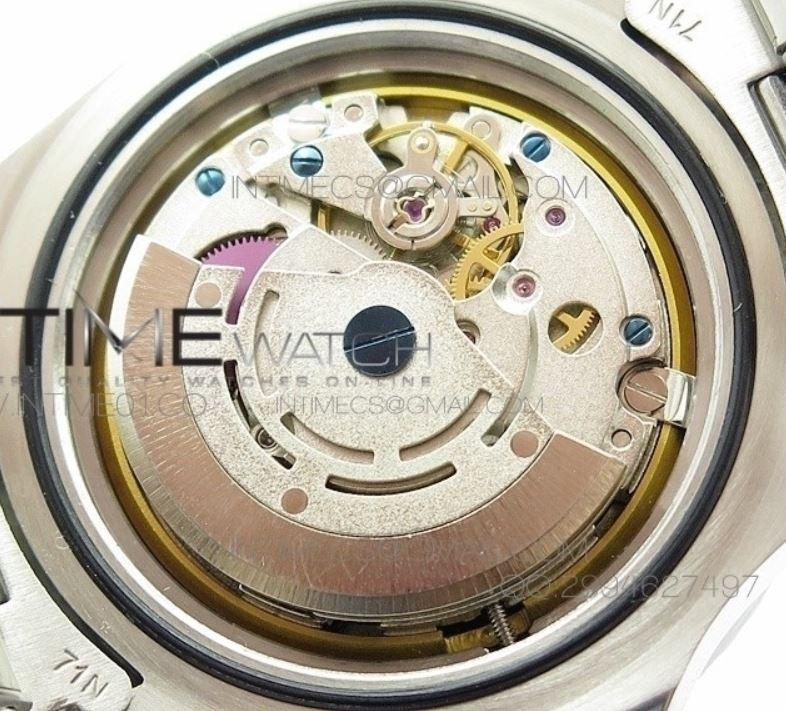
Plain DG2813 - no GMT feature
GMT DG2813 - has an extra gear for a non-independent GMT hand. Sometimes referred to as 21j or 23j.
If the DG movement has an independent GMT or hour hand, it is a DG3804. Usually referred to on TD sites as a DG2813 or sometimes even as a 21j or 23j (Nembo, for example). You'll know it is really a DG3804 by the independent GMT or hour hand. Aftermarket vendors list them properly if you have to buy a replacement movement.
DG3804 with independent GMT hand on the bottom - is CHS for 4 digit Rolex GMTs, ICHS for 5 and 6 digit Rolex GMTs.
New DG3804 with jumping hour hand on the bottom - is ICHS for 4 digit Rolex GMTs, CHS for 5 and 6 digit Rolex GMTs. Note that TD sites still refer to this movement as a DG2813, but will state "hour hand moves like gen" or something similar. They function just like the ETA 2824 movement, with a jumping hour hand. These movements have not been out long enough for their reliability to be adequately evaluated. They are unique and only available from a TD.
ETA MOVEMENTS
These movements still account for the majority of rep Rolex GMTs sold. They will either be an A2824 (jumping hour hand on the bottom) or an A2836 (independent GMT hand on the bottom). Many people will simply refer to these ETA movements as CHS or ICHS, but remember that this depends on what model the movement is in.
4 digit gen models have the GMT hand on the bottom, so
A2824 - is ICHS for 4 digit Rolex GMTs, CHS for 5 and 6 digit Rolex GMTs. This is the TIMEBOMB movement! It has a jumping hour click spring that can easily break which will keep your hour hand from working. These movements are unique and only available from a TD.
A2836 - is CHS for 4 digit Rolex GMTs, ICHS for 5 and 6 digit Rolex GMTs. This the SAFE BET ETA movement. These movements are more easily repaired or replaced from aftermarket sources.
Look at the TD movement pics to ID the ETA movements. The key to identifying an ETA movement is the autowind module and crown wheel. Once you learn to recognize those, it is easy to tell it is an ETA movement. The hand stack will tell you the rest.
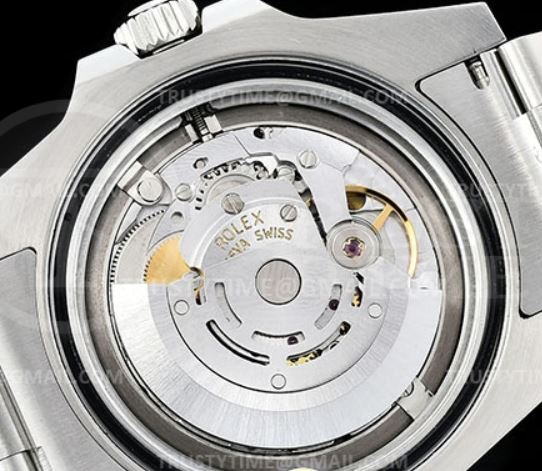

Important notes: TDs will often list these movements as A3186, or A3285 or “Asian superclone”. Do not be fooled! Learn to ID the movement as an ETA clone, and know what you are buying. Remember that while the A2824 movement is the timebomb movement, it can be made to last longer if you treat it carefully and properly. Minimize use of crown position 2 and use a winder to keep the date close to correct.
How to set your timebomb movement
SUPERCLONE MOVEMENTS
These movements are true superclones of the gen 3185/6. VRF makes the “VR3185”, ARF makes the “SH3186”. These are two new, revolutionary movements based on the VR3135 and the SH3135. The VRF has a clone jumping hour spring based on the gen 3185, the ARF has a clone jumping hour spring based on the gen 3186. Both movements seem to be a generational leap ahead in terms of capability and reliability, some may prefer the VRF because of the more robust jumping hour click spring.
Gen jumping hour click springs compared
The movements are similar in appearance and easy to identify. They both will only be CHS, since so far they are only available in 6 digit models.
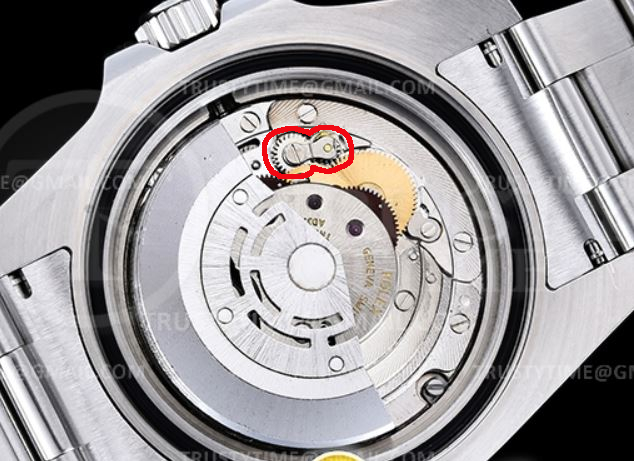
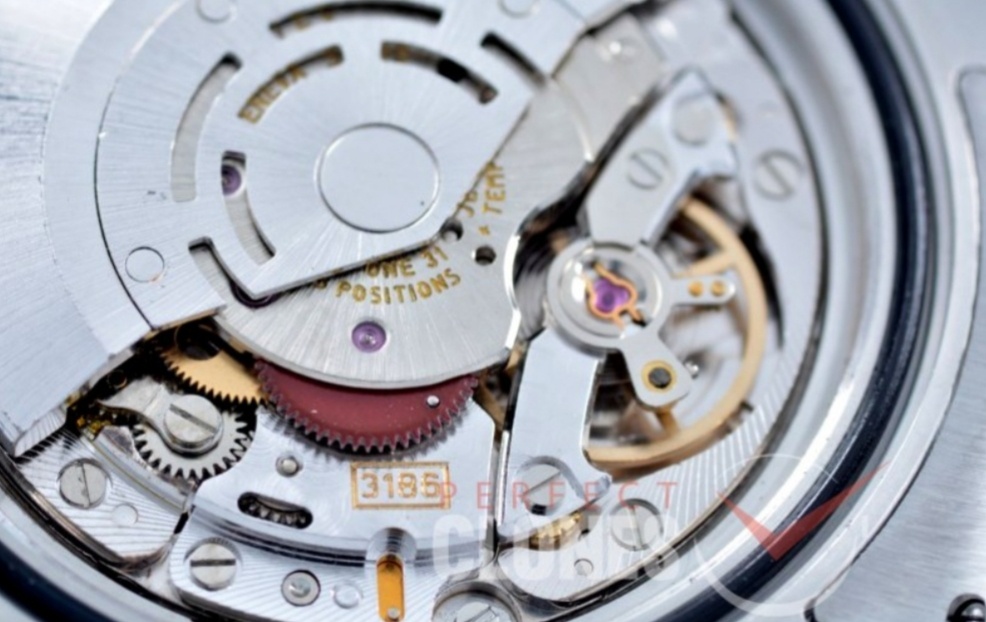
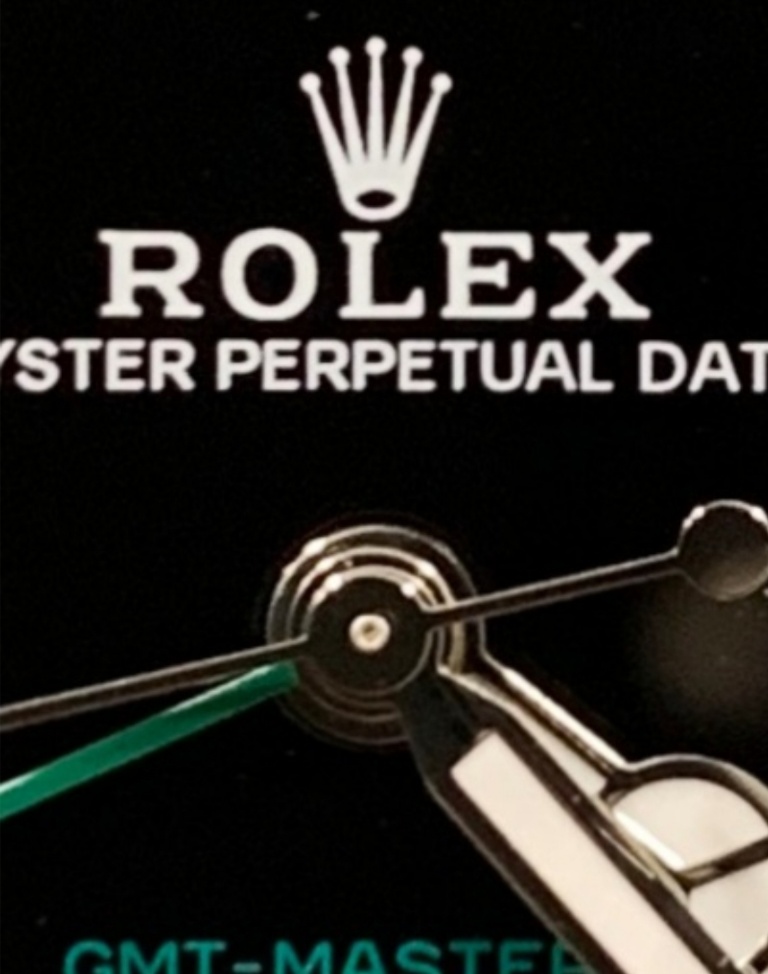
Summary Chart
.
`
Happy hunting, GMTs are Great!
Some additional links
New DG3804 GMTs
How to set your TIMEBOMB movement
Why the TIMEBOMB movements fail
Swap your TIMEBOMB to a SAFE BET movement
New ARF vs VRF GMTs
VRF Batman released
I will focus mainly on the rep differences in this post, but if you want to learn more about the history and the evolution of the models, see this link. You can read up here about different variations in each model like insert options, dial indices, SELs, lug holes, etc. That is not the focus of this post.
http://www.gmtmasterhistory.com/
MODELS
First let’s talk about models. I’m restricting these listings to the most common reps, there are additional variations in the 5 and 6 digit series. Here are some examples of the most common models.
4 digit - 6542


4 digit - 1675


5 digit - 16710


6-digit - 116710 LN (Black), BLNR (Batman), 116713 LN (Two-tone)


6 digit - 126710 BLNR (Batman), BLRO (Pepsi), 126711/5 CHNR (Root beer)

HAND STACK
CHS = Correct Hand Stack
ICHS = InCorrect Hand Stack
The 4-digit gen models have the GMT hand on the bottom of the hand stack. 5 and 6 digit gen models have the hour hand on the bottom. Rep movements can have the hand stack correctly configured, or incorrectly configured depending on what movement is used with which model. Note that a certain movement can be correct for one model and incorrect for another model with regard to hand stack. The hand stack is only as important as you make it. The GMT and hour hands are only near each other for about two hours a day, otherwise it’s not that noticeable to many.
Here are pics of a 1675 and a 16710. If you zoom in you can see that both have the GMT hand on the bottom. From the discussion above, we know that this is CHS for the 1675 and ICHS for the 16710.


Here is a pic of an hour hand on the bottom of the stack. This is CHS for 5 and 6 digit models.

Note that BP/GMF uses a GMT hand hole surround that is larger than the hour hand hole surround beneath it. Don’t let that stop you from ID’ing both these watches as CHS (hour hand on the bottom).

MOVEMENTS
This is the main focus of this post, to help members differentiate among the various movements available for rep Rolex GMTs. Many TD sites list the movements incorrectly and it is ultimately up to you to know what you are buying. You need to become skilled in identifying two aspects of the watch pics you see on a TD website - the hand stack and the movement. If you correctly ID both of these, you will know for sure what you are buying despite what the site information may say. It is very easy to do this, I will show you how. We previously saw how to ID whether the hand stack is CHS or ICHS, next we will see how to ID the movements.
Movements can be broken into three main groups - DGs, ETAs, and Superclones.
DG MOVEMENTS
DG movements for GMTs will be either a 2813 or a 3804, depending on whether or not the GMT or hour hand is independent. Many cheaper DG GMTs will not have an independent GMT hand, it is slaved to the hour hand, but on a 24 hour rotation cycle. On these models, the bezels must be used to observe a second time zone. Note that the gen 4 digit GMTs and two early 5 digit gen models (16750 and 16700) did not have an independent GMT or hour hand.
Look at the TD movement pics to ID the DG movements. They are easy to ID. Almost always has blue screws, big blue rotor screw, simple looking movement. These movements are the cheapest ones you can buy in a rep and although they are pretty reliable and will likely last a while, they are not easy or cost effective to service. If one fails it is usually better to just replace it. So ID your hand stack and your movement to know what you are buying.

Plain DG2813 - no GMT feature
GMT DG2813 - has an extra gear for a non-independent GMT hand. Sometimes referred to as 21j or 23j.
If the DG movement has an independent GMT or hour hand, it is a DG3804. Usually referred to on TD sites as a DG2813 or sometimes even as a 21j or 23j (Nembo, for example). You'll know it is really a DG3804 by the independent GMT or hour hand. Aftermarket vendors list them properly if you have to buy a replacement movement.
DG3804 with independent GMT hand on the bottom - is CHS for 4 digit Rolex GMTs, ICHS for 5 and 6 digit Rolex GMTs.
New DG3804 with jumping hour hand on the bottom - is ICHS for 4 digit Rolex GMTs, CHS for 5 and 6 digit Rolex GMTs. Note that TD sites still refer to this movement as a DG2813, but will state "hour hand moves like gen" or something similar. They function just like the ETA 2824 movement, with a jumping hour hand. These movements have not been out long enough for their reliability to be adequately evaluated. They are unique and only available from a TD.
ETA MOVEMENTS
These movements still account for the majority of rep Rolex GMTs sold. They will either be an A2824 (jumping hour hand on the bottom) or an A2836 (independent GMT hand on the bottom). Many people will simply refer to these ETA movements as CHS or ICHS, but remember that this depends on what model the movement is in.
4 digit gen models have the GMT hand on the bottom, so
A2824 - is ICHS for 4 digit Rolex GMTs, CHS for 5 and 6 digit Rolex GMTs. This is the TIMEBOMB movement! It has a jumping hour click spring that can easily break which will keep your hour hand from working. These movements are unique and only available from a TD.
A2836 - is CHS for 4 digit Rolex GMTs, ICHS for 5 and 6 digit Rolex GMTs. This the SAFE BET ETA movement. These movements are more easily repaired or replaced from aftermarket sources.
Look at the TD movement pics to ID the ETA movements. The key to identifying an ETA movement is the autowind module and crown wheel. Once you learn to recognize those, it is easy to tell it is an ETA movement. The hand stack will tell you the rest.


Important notes: TDs will often list these movements as A3186, or A3285 or “Asian superclone”. Do not be fooled! Learn to ID the movement as an ETA clone, and know what you are buying. Remember that while the A2824 movement is the timebomb movement, it can be made to last longer if you treat it carefully and properly. Minimize use of crown position 2 and use a winder to keep the date close to correct.
How to set your timebomb movement
SUPERCLONE MOVEMENTS
These movements are true superclones of the gen 3185/6. VRF makes the “VR3185”, ARF makes the “SH3186”. These are two new, revolutionary movements based on the VR3135 and the SH3135. The VRF has a clone jumping hour spring based on the gen 3185, the ARF has a clone jumping hour spring based on the gen 3186. Both movements seem to be a generational leap ahead in terms of capability and reliability, some may prefer the VRF because of the more robust jumping hour click spring.
Gen jumping hour click springs compared
The movements are similar in appearance and easy to identify. They both will only be CHS, since so far they are only available in 6 digit models.



Summary Chart
.
| � | |||
| 4 digit | 5 or 6 digit | ||
| Hour hand on bottom | Date change by jumping hour hand | ||
| New DG3804 | ICHS | CHS | unevaluated |
| ETA 2824 | ICHS | CHS | TIMEBOMB |
| VR3185/SH3186 | n/a | CHS | superclone |
| GMT hand on bottom | Quickset date change | ||
| DG2813 | CHS | ICHS | non-independent GMT |
| DG3804 | CHS | ICHS | cheap, reliable |
| ETA 2836 | CHS | ICHS | SAFE BET |
Happy hunting, GMTs are Great!
Some additional links
New DG3804 GMTs
How to set your TIMEBOMB movement
Why the TIMEBOMB movements fail
Swap your TIMEBOMB to a SAFE BET movement
New ARF vs VRF GMTs
VRF Batman released
Last edited:
